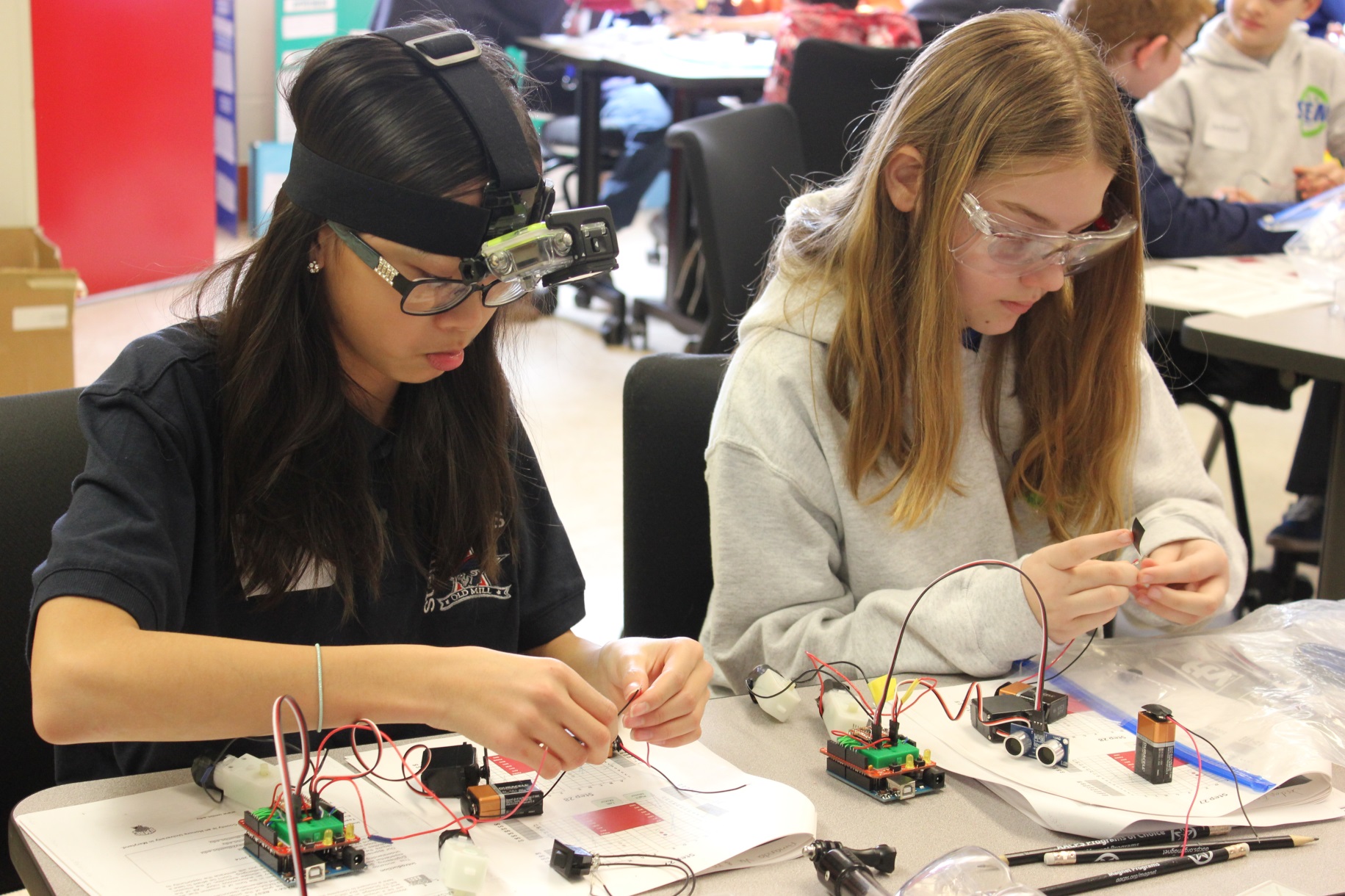3 Ways to Excite and Encourage Girls in STEM in Your Classroom
As a science teacher, keeping girls in STEM is something I strive for. A few years ago, my school was fortunate enough to have a Techbridge Girls after-school program. Techbridge Girls is a nonprofit organization focused on keeping girls in STEM. It provides role models, families, and organizations with training, curriculum, and support to girls in undeserved areas.

The co-teacher of the after-school program was a female college student who shared her own struggles and successes in the STEM field. The curriculum included the girls adjusting the design of a robotic wooden dinosaur until it could walk a short distance without falling over, disassembling a hair dryer to determine what made it work, properly soldering five locations on an electronic circuit board, and engineering a gumball machine. I witnessed the girls' confidence grow as the weekly tasks increased in difficulty. With each struggle, they needed to find their own solution and with each solution, they found success. The experience gave them a glimpse of what their future could consist of.
- 0 Comments
- Sep 24, 2019 9:45:00 AM
- Posted by Natalia Galvis
- Topics: EdTech, STEM, teachers, STEMchat, WomeninSTEM, Edchat, girlsinSTEM
12 Inspiring STEM Books for Girls
Science, technology, engineering, and math are more important than ever, so we’ve put together a list of books to encourage girls to persevere in these subjects.

- 0 Comments
- Aug 28, 2019 10:26:00 AM
- Posted by Natalia Galvis
- Topics: STEM, steam, STEMchat, WomeninSTEM, Edchat, girlsinSTEM, AI
5 Ways to Get Girls into STEM

As a society, we learn about the world and advance our well being through science and engineering. The United States may be known around the world for its higher education, but compared to many other leading and steadily emerging countries, we lack a strong focus on educating scientists and engineers. One significant reason that we have fallen behind is that we do not encourage our female students to pursue career paths in Science, Technology, Engineering and Math (STEM).
- 0 Comments
- Aug 16, 2019 11:00:00 AM
- Posted by Natalia Galvis
- Topics: EdTech, STEM, STEMchat, WomeninSTEM, Edchat, girlsinSTEM
Closing the STEM Gender Gap in K-12 Education: How Teachers Can Help
It is, unfortunately, no surprise that the gender gap in science, technology, engineering and math (STEM) still exists – from primary school right up through STEM-related careers. Recent reports call attention, once again, to the statistics: women earn disproportionately fewer STEM undergraduate degrees; women hold nearly 50% of all jobs in the US, but less than 25% of the STEM jobs; women with STEM degrees are more likely to work in education or healthcare than their male counterparts.

- 0 Comments
- Aug 9, 2019 11:56:04 AM
- Posted by Natalia Galvis
- Topics: EdTech, STEM, STEMchat, WomeninSTEM, Edchat, Gendergap
Here’s how to encourage more girls to pursue science and math careers
Women remain underrepresented in science, technology, engineering and mathematics, or STEM. In the field of engineering, for example, women earned fewer than 20 percent of doctorates in 2014.

Such gaps, however, are not the result of differences in intellectual ability. Girls currently make up over half of the United States’ gifted student population. If girls have the smarts needed for success in STEM, then what factors explain why they don’t pursue education and careers in these fields?
- 0 Comments
- Jul 1, 2019 1:32:30 PM
- Posted by Maria Alejandra Calcetero
- Topics: EdTech, STEM, Curriculum, STEMchat, WomeninSTEM
Relevant Posts
Popular Posts
Subscribe to Email Updates
-
I Want To Learn MoreADDITIONAL INFORMATION


